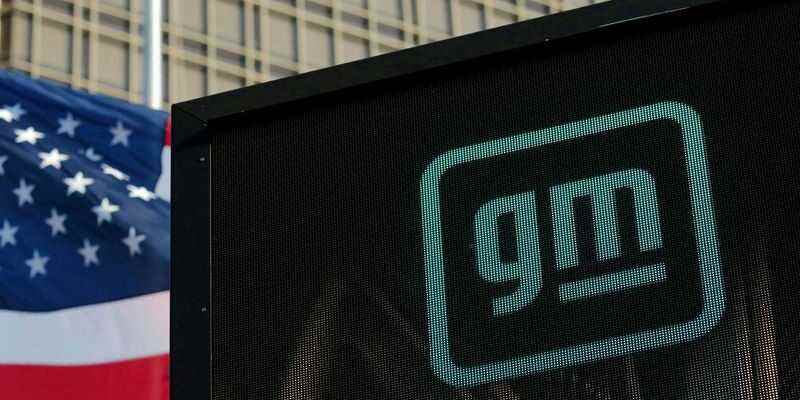Self-driving test cars with human safety drivers have become a constant sight in San Francisco, and completely driverless cars are becoming more common too. Turning these cars into a fledgling business in a major US city would mark an important milestone in the long overdue journey to driverless taxi service.
Licensing was the final hurdle Cruise had to clear in California. Cruise said it will launch paid services in the next two weeks using up to 30 driverless Chevrolet Bolt electric vehicles.
The California Public Utilities Commission approved Cruise’s permit application last Thursday by a vote of 4-0.
Commissioner Clifford Rechtschaffen said during the meeting that the commission had “taken a cautious and phased approach” to regulating autonomous vehicles.
“This resolution marks another important step in that effort,” he said. “It will allow our staff to continue to collect very important data that will support the development of future phases.”
Disability and business groups had expressed their support. State commission staff had recommended approving Cruise, saying its proposal reasonably protects passenger safety.
Citing concerns that unusual car behavior could lead to personal injury, San Francisco firefighters, police and transit officials wanted state regulators to impose restrictions before allowing self-driving vehicles ( VA) of Cruise transport people. They recommended requiring additional approval to add more cars and creating a new task force made up of state and local officials.
Local officials said that in April, a confused Cruise AV briefly blocked a San Francisco fire truck heading toward a three-alarm blaze, and days earlier, a driverless Cruise car stopped by police appeared to be on the road. ‘get away before the officer is done. Cruise said his cars make confident decisions.
While rival Alphabet Inc, Waymo, has been charging for rides in suburban Phoenix since 2018, Cruise’s proposed deployment in his hometown of San Francisco, a more densely populated, hilly and unpredictable area, is seen by experts in technology as the biggest challenge.
Waymo has been giving employees self-drive tours of San Francisco since March, and Cruise has been giving the public free late-night test rides since February. Cruise said he would start charging during the same time frame, in a geographic area that avoids downtown.
But there’s also a long-standing problem that self-driving cars can’t always correctly predict how humans will react to changing events, including the car’s actions. Cruise even gave the issue a name, the “couples problem,” according to a former employee.
ACCIDENTS AND NEAR-ACCIDENTS
Ten years after California allowed the first public tests of self-driving vehicles, smooth rides that obey traffic rules are the norm, but the surprises persist.
In a public presentation last year, Cruise’s senior manager Brandon Basso described “kinematic uncertainty,” a challenge self-driving cars face in predicting the actions of humans on the road and deciding, for example, when to give way.
Cruise said his vehicles understand complex social dynamics and protect against uncertainty by taking safe steps.
Even San Francisco officials who challenged the permit said that despite “the glaring exceptions, the driverless Cruise AV generally appears to operate as a cautious and compliant defensive driver.”
Although self-driving cars can adapt to nearby rule breakers, “human error or behavior such as a traffic violation that diverges from likely behavior patterns is a factor in a disproportionate number of collisions” , Waymo Reuters said in a statement.
Cruise does not disclose what three former employees say are two key safety statistics internally: the frequency with which its cars encounter novel situations or experience what it calls “critical safety incidents”, a combination of accidents and near misses.
Public records seen by Reuters show Cruise, with his computers at the controls, suffered 34 crashes involving bodily injury or damage of more than $1,000 over nearly 3 million miles of driving during a four-year period. years ends in May 2021.
The documents, which Cruise redacted in February in response to a request from Reuters, show his attempts to avoid the repeated collisions. For 28 of the cases, Cruise sought technological solutions, which were often tied to improving predictions of what humans will do. It also relaxed some rules: including a 2019 crash response that allows the car to “adjust strict adherence to all marked lanes”, so it can maneuver around truck guys or slow cyclists.
In January, Waymo sought a court order to keep its comparables data confidential, calling them trade secrets. The state did not object to this request, and Waymo’s records remain redacted.
Some accidents have given rise to legal proceedings. A bike courier and scooter driver sued Cruise, and Waymo settled the matter in a 2016 car accident.
Cruise said the car was not self-driving during the scooter incident and is fighting the case.
Cyclist Christopher McCleary, who settled his lawsuit last month, said he suffered continuing injuries after crashing into a Cruise car which he says unexpectedly came to a stop in San Francisco in 2018, and he is calling into question question the experimentation of driverless cars in public.
“Unfortunately,” he said via email, “I feel like Cruise ‘learned’ to run into me and it was actually a sacrifice I had to make to allow Cruise to become “better” at predicting situations.”
